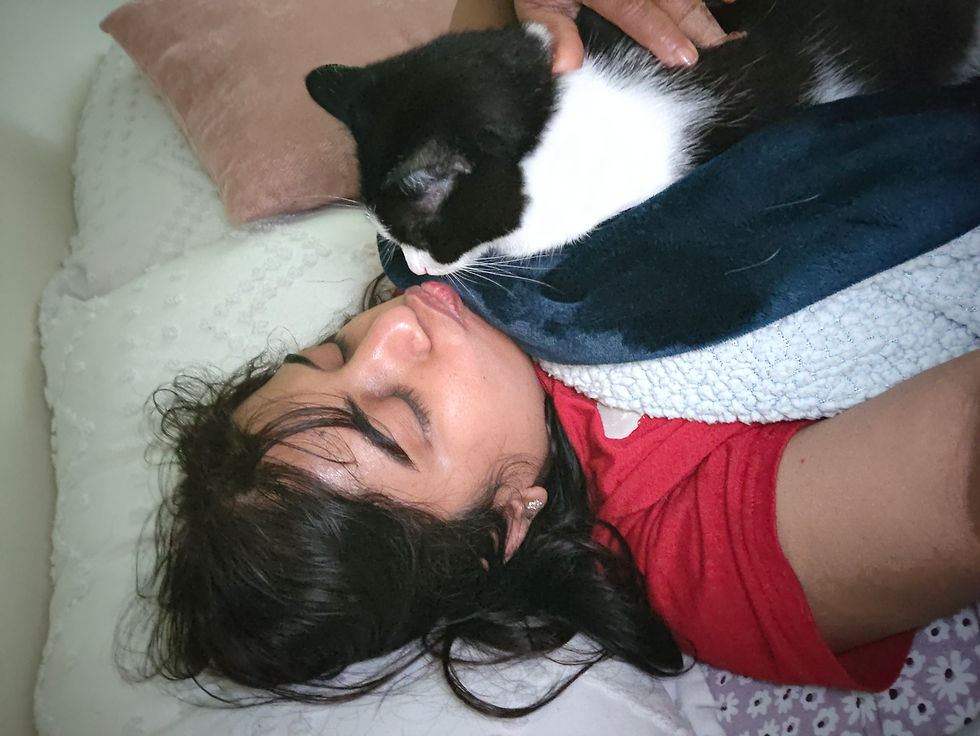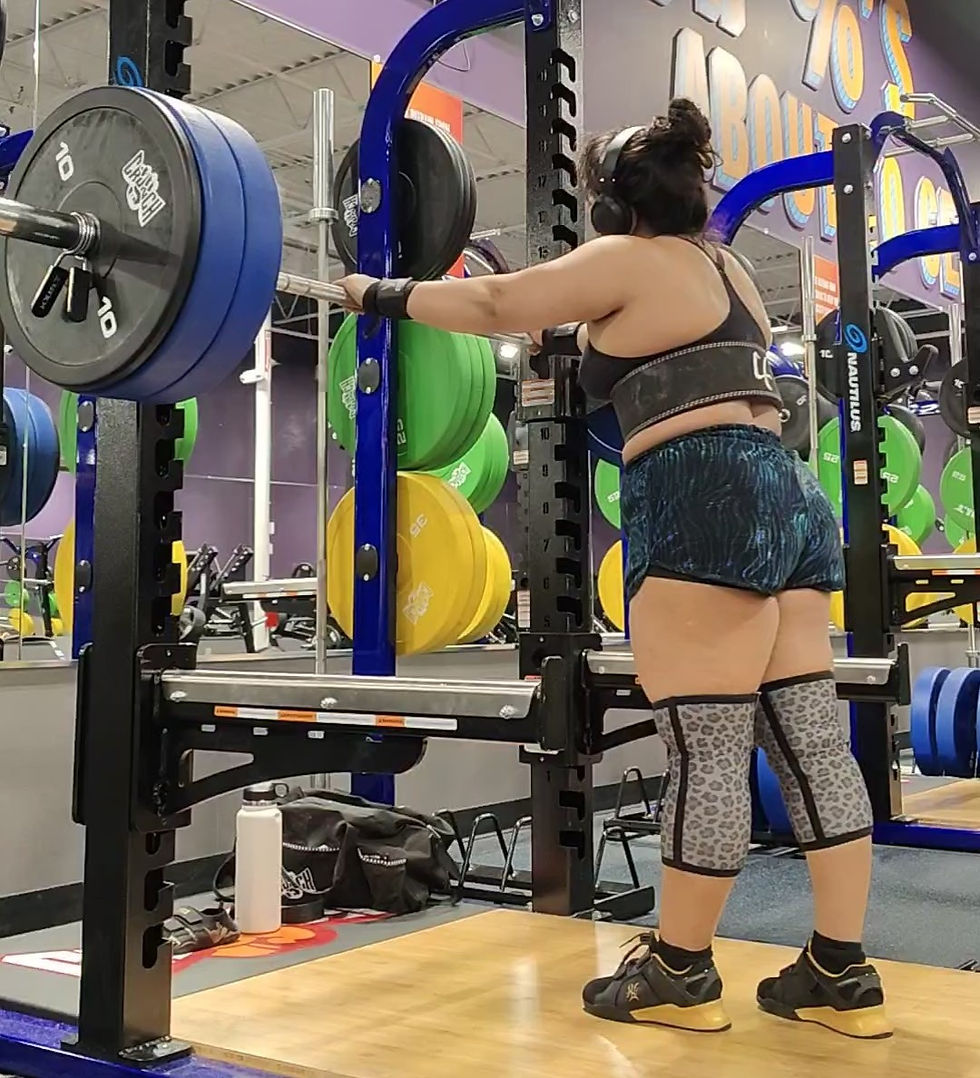What My Cat Taught Me About Observation as a Method
- Tejaswini Joshi
- Jul 13
- 5 min read

Observation is Relational
From a strictly methodological frame of reference, Schensul and Le Compte define participant observation as “a data collection technique that requires the researcher to be present at, involved in, and recording the routine daily activities with people” (Schensul & Le Compte, 1991, p. 91). But what it means to be present, involved, and to record is often a matter of perspective, not simply a matter of rigor.
Observation, they remind us, is “always filtered through the researcher’s interpretive frames” (p. 91).
But what do we mean by interpretive?
In my dissertation, I argue that interpretation extends beyond cognitive awareness. It includes the full weight of who you are — your emotions, your history, your body — in any given spatio-temporal moment. To observe is not just to witness, but to arrive as yourself in relation to another and to be shaped by that encounter.
Living with my cat has taught me this in embodied, tangible ways. I might notice her slow blink or shifting ears, but she notices me too: the tension in my shoulders, the sound of keys hitting my laptop, the tempo of my breath. We are engaged in daily, quiet participant observation of each other. No clipboard. No protocol. Just reciprocal attention.
Borrowing from Doucet’s approach to relational knowing, observation outcomes are not solely determined by what the researcher notices. They are co-produced and shaped by what the participant may or may not allow to be noticed, based on what they notice and understand of the researcher.
Observation is relational. Not extractive, but entangled.
Living with my cat reminds me of this truth daily. I might think I’m the one observing — but she chooses what to reveal, how to respond, when to withdraw. She studies me back. In this quiet loop of mutual observation, what becomes visible is always contingent on how we meet each other in shared space.
This isn’t just observation. It’s relationship.
Observation is Attunement Beyond Words
You see, cats are very private animals — and therefore, very hard to read. They hide pain. Their displeasure is communicated subtly, until it's not. They won’t always tell you when something’s wrong — but if you know how to watch, you’ll see it. In the way they leave a room. The stillness behind their eyes. The pause in their usual routine.
But here’s the thing: cats are also keen observers.
They learn your rhythm. Your mood. The sound of your footfall.
They know when you’re about to cry, when you’re about to leave the house, when your energy shifts even before you do. They know you in ways no human could.
This isn’t just affection. It’s attunement — a quiet, embodied way of knowing that doesn’t rely on language. A way of listening that is rooted in presence, not performance.

And over time, you begin to notice differently too.
You start to see how emotion lives in muscle tension.
You feel the shape of a room change with a breath.
You learn to sense affect and not just record action.
In fieldwork or UX research, this kind of attunement is not about identifying insights or fixing friction points. It’s about learning the stories of the people you’re trying to understand. The lived experience of research participants, or the quintessential users of the product you’re trying to sell. It’s what helps us notice what’s not being said — the hesitations, the silences, the subtle shifts in tone.
It’s what keeps us grounded in care, rather than floating in extraction.
Relational Observation Isn’t Optional — It’s Strategic
Who we become when we are watched is directly shaped by the kind of relationship we establish.
With a cat, this becomes immediately visible: If you simply feed her, clean her litter box, and check the functional boxes of care she may tolerate your presence. But she will not show you her full self. She won’t bring you her toys, stretch her belly in vulnerable sprawl, or chirp at you when you enter the room. If there is no play, no trust, no engagement the range of what she reveals (and what you’re able to notice) remains limited.

Observation, in that case, becomes shallow. But that is not because the subject is unknowable, rather it is because the relationship is undernourished.
The same is true in research and design.
Think about a pop-up survey: “Rate this app!”
Most people dismiss it. Others click something quickly just to make it go away.
It’s a gesture of forced observation, almost an intrusion. A one-sided ask with no relational groundwork. It often yields disingenuous, defensive, or empty data.
But now imagine someone willingly navigating to your feedback page and writing:
“I use this tool every day. It makes my work easier. I just wanted to say thank you.”
That kind of feedback isn’t “collected”, it’s given.
Not demanded, but offered.
It reflects a different kind of presence: one built on trust, clarity, and emotional resonance.
As designers and researchers, this is the kind of observation we should aspire to: Relational. Voluntary. Honest.
Where people want to tell us their story, not because they have to, but because they know we’re listening.
The question isn’t just “What can we learn from users?”It’s “Who are we inviting them to be, when they know they’re being watched?”
And yet, in practice, user metrics are often reduced to a symbolic act , a checkbox in the product lifecycle.
Too often, “user testing” becomes shorthand for surface-level data capture — the kind that allows teams to say they’ve listened without ever really hearing. It gives a false sense of certainty, a veneer of user-centeredness, while bypassing the emotional labor, strategic thought, and design humility required to learn something meaningful.
It gives a “user testing done” check without doing the strategic and emotional work. It feeds the sprint, but starves the strategy.
And that’s the thing about observation. It’s not just about gathering insights or validating design decisions. It’s about earning the kind of relationship where truth can emerge. Whether we’re watching a user, a participant, or a beloved pet, what we’re able to notice and what is revealed to us depends entirely on how we show up.
Which means that the most meaningful observations aren’t just methodological wins. They’re moments of trust.
And trust, in research and in life, is slow, quiet, and relational by nature.
In the end, observation is not a tool. Rather, it’s a relationship. Whether in fieldwork, product design, or a quiet moment with a cat, what we’re allowed to see is shaped by how we choose to be. When we show up with care, slowness, and respect, we’re not just collecting data. Instead, we’re being invited into a shared space of meaning. That’s not something you can force. It’s something you earn.
And maybe that’s the most important thing my cat has taught me:
The deepest insights don’t come from asking the right questions. They come from becoming someone worth revealing the answers to.





Comments